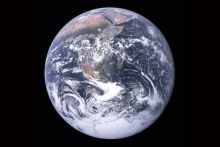Happy New Year! Here’s what’s new from the Critical Issues Program:
- On December 6th we held our most recent webinar, “Geologic Mapping to Empower Communities: Examples from the Great Lakes”, which featured speakers from the Great Lakes Geologic Mapping Coalition (GLGMC), a group of states and provinces that collaborate to create detailed 3D geologic maps that are helping to provide decision-relevant information to Great Lakes communities. The speakers discussed case studies of recent and ongoing projects in Illinois, Minnesota, and Michigan. Thank you to the more than 500 people who registered and over 300 who attended live. If you missed the live webinar you can find a video recording, copies of the presenters’ slides, and additional resources by clicking here.
- Our next webinar, “Tracking the Global Supply of Critical Materials”, will take place on Friday January 26th at 11:00 am EST. No country in the world produces all of the mineral resources necessary for modern society. International trade plays a critical role in providing these raw materials, forming a global network of production, export, import, and use. This network must continuously adapt to national and international developments in science, technology, politics, and economics. As a result, information on the global flow of raw materials plays a fundamental role in improving national and international resilience to potential supply disruptions and market changes. This webinar will focus on U.S. and EU efforts to gather information and develop tools that can be used to ensure a secure national and global supply of mineral resources; identify and quantify vulnerabilities in this supply; and stimulate national and international co-operation, education and outreach, and innovation in the development, recycling, and substitution of key mineral resources. For more information, and to register for this webinar, please click here.
- Valley fever is a health hazard intimately linked to geological conditions: it’s caused by a fungus that lives in arid soils and is released into the air when those soils are disturbed. Inspired by a chapter in last year’s AEG publication, Applied Geology in California, we’ve produced a short factsheet to provide a quick rundown of the risk factors, underlying science, and management practices that can help to reduce valley fever risks in southwestern soils. Check it out here.
- Applications for our three summer internships in the Policy & Critical Issues programs (undergraduate to Master’s level) are open until March 1st. For those with advanced degrees (Ph.D. in geoscience or a Master's in engineering plus 3 years' professional engineering experience) and an interest in science policy, applications are open for the 2018-2019 William L. Fisher Congressional Geoscience Fellowship until February 1st. If you have any questions about these internships and fellowships, contact us at govt@agiweb.org.
- Our Twitter account is moving! We’re closing up shop at @AGI_GeoIssues and joining forces with our colleagues in Policy and Communications. Our policy-focused tweets will now be hosted at @AGI_Policy, while our Map of the Day and general interest posts will be featured on @AGI_Updates. We encourage you to check out and follow one or both of those accounts – they both have lots of great information on societally relevant geoscience.
- Not a Twitter user? For more updates and information from the Critical Issues Program, including details of upcoming events, you can always subscribe to our mailing lists.

